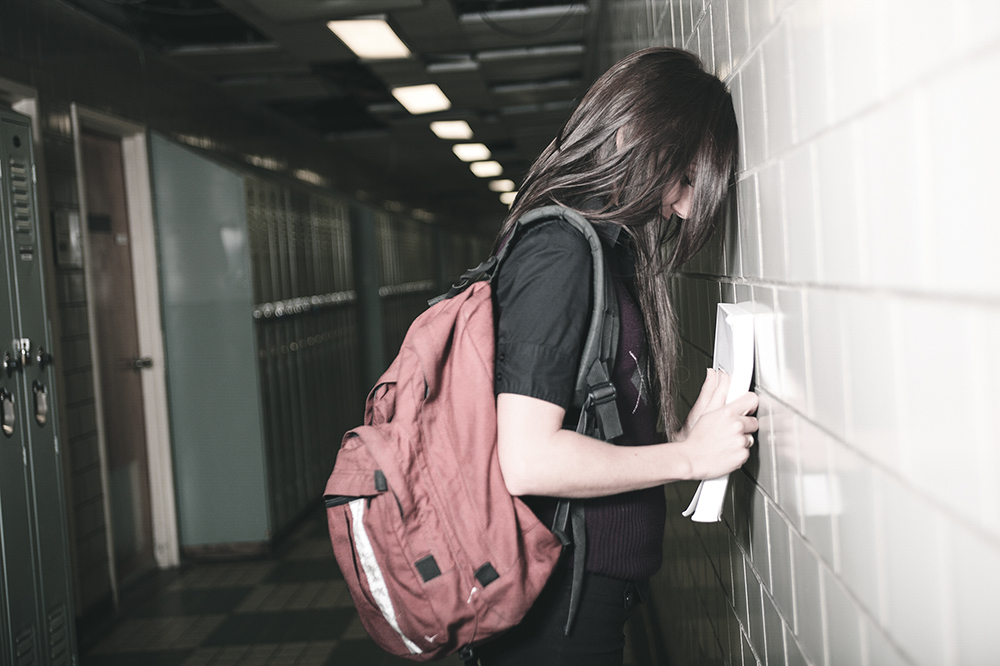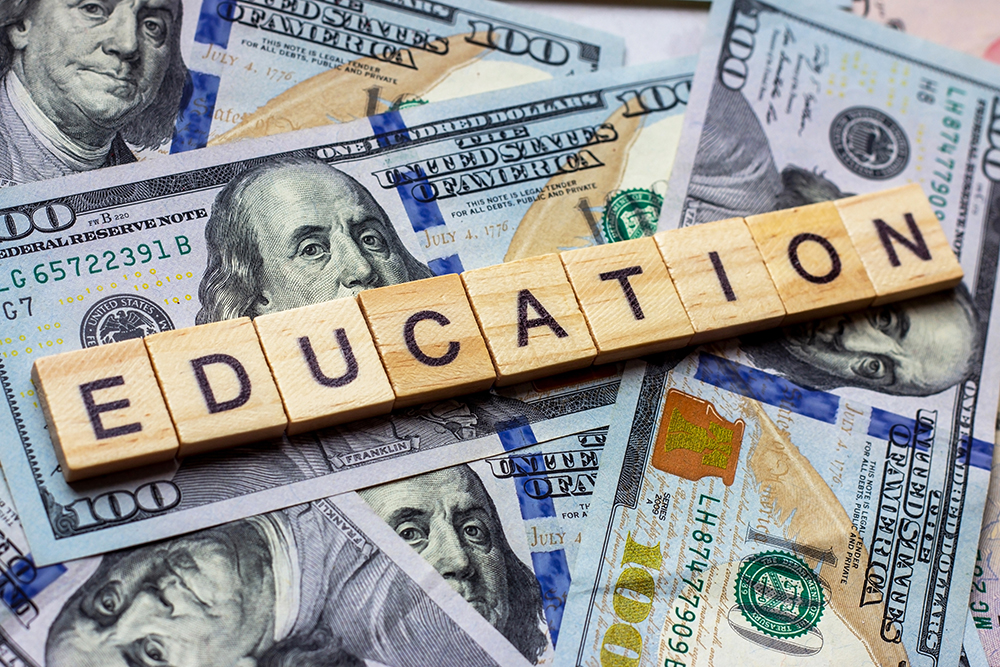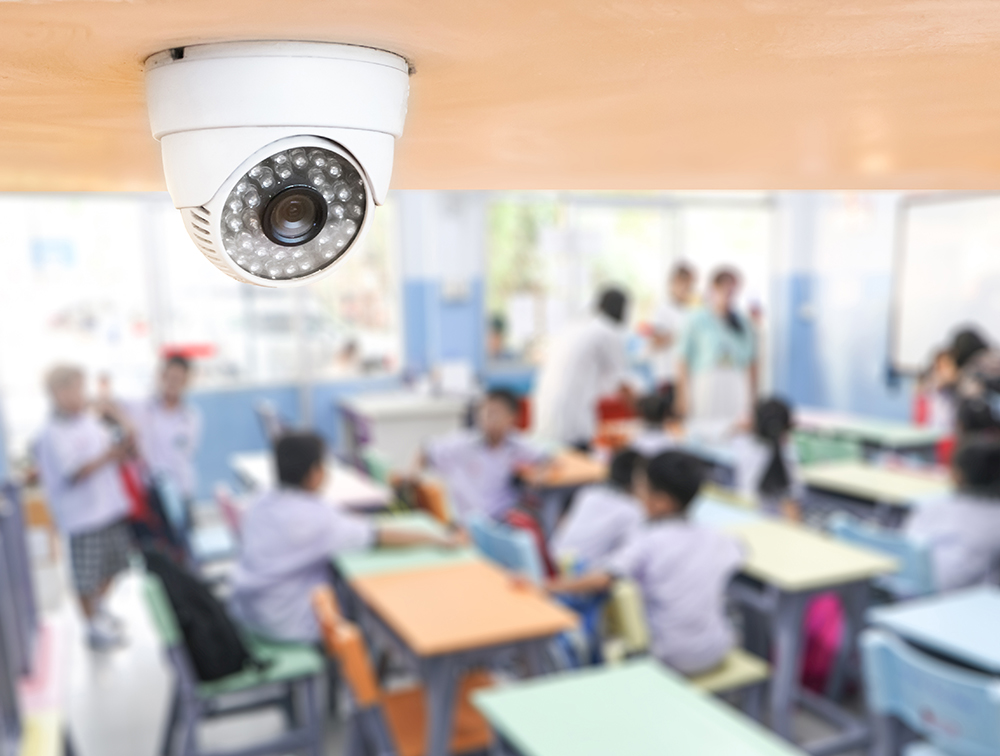Poor educational standards—with schools looking more like mental health clinics—have prompted the watchdog group CCHR to update its report on the adverse impact of psychiatric and psychological programs on the U.S. educational decline.
By Jan Eastgate
President CCHR International
October 28, 2022
The Citizens Commission on Human Rights International (CCHR) has launched an investigation into the adverse impact of mental health policy on schools, with a plan to update its report on how psychiatric programs cause educational decline, which was first published in 1995. The report showed how the emphasis on mental health at the expense of standard education, including art and music education, resulted in shockingly poor educational standards. The COVID-19 pandemic further impacted education, with math and reading scores for 9-year-olds, for example, falling between 2020 and 2022 to a level not seen in decades.[1]
However, as The Dallas Morning News and other media reported, “The pandemic made a bad situation worse,” because even before the pandemic, reading achievement was in a slump and reading scores of the lowest achieving students has been declining for a decade.[2] CCHR is renewing its investigation into how massive increases in mental health funding in schools have worsened the problem and have contributed to increasing acts of school violence.
In 1983, there was the famous line from the report, A Nation at Risk, which declared: “If an unfriendly foreign power had attempted to impose on America the mediocre educational performance that exists today, we might well have viewed it as an act of war.”[3] That act of war has continued and one would be hard-pressed not to think that the country’s halls of learning have become mental health clinics.
The 1983 report noted:
“The average achievement of high school students on most standardized tests is now lower than 26 years ago.”[4]
Apparently, matters have not improved. In 2018, the U.S. placed 11th out of 79 countries in science. It did much worse in math, ranking 30th.[5]
In the decades since A Nation at Risk, there’s been a huge investment in school mental health funding. In 2009, it was reported that mental health services were the fastest-growing component of school-based health care. In the previous 10 years, the number of school-based health centers with mental health professionals on staff had more than doubled.[6]
Despite such investment, conditions for schoolchildren have only worsened.
The most recent numbers for K-12 spending reveal that the U.S. spends $14,891 per public school student per year, for a total of $762 billion.[7] When the Goals 2000: Educate America Act was introduced to improve literacy, the Department of Education’s budget was around $38.2 billion.[8] The importance of literacy can be seen in figures from the National Assessment of Adult Literacy, which showed that 2/3 of students who cannot read proficiently by the end of the fourth grade will end up in jail or on welfare; 85% of all juveniles who interface with the juvenile court system are functionally low literate.[9]
The huge investment in mental health “services” for our schools has not improved mental health, because it is incessantly reported as worsening, so much so that in October 2022, the U.S. Department of Education announced it was increasing access to mental health services for students and young people at a cost of $280 million. This includes increasing the number of school-based mental health professionals. More than $2 billion has also been allocated to hire more school psychologists, counselors, and other mental health professionals in K-12 schools.[10]
- As of July 2022, the number of school social workers was up 54% and the number of school counselors had increased by 22%. Additionally, the Department of Health and Human Services announced awards of nearly $27 million to expand mental health care for children.
- Some $300 million was appropriated to hire more school-based mental health professionals and build a strong pipeline (feeder-line) into the profession. An additional $1.7 billion for mental health is headed to schools and communities through the Bipartisan Safer Communities Act (BSCA).
- In 2019-20, middle and high schools were more likely than elementary schools to provide school-based mental health services. Roughly two-thirds of middle (64%) and high schools (65%) offered mental health assessments, while half of elementary schools did so. And 47% of both middle and high schools, as well as 40% of elementary schools, provided “treatment”. 71% of schools with at least 1,000 students offered mental health assessments, compared with 43% of those with fewer than 300 students.
- Racial or ethnic minorities were specifically targeted for mental health assessments in six of every ten schools, where over 75% of students were provided assessments, compared with 50% of schools where a quarter or fewer of students were racial or ethnic minorities.[11]
- In the 2021-2022 school year, already 96% of public schools reported offering at least one type of mental health service to their students. This includes individual-based interventions like one-on-one counseling or therapy (84% of public schools); case management or coordinating mental health services (70%), and referrals for treatment outside of the school (66%).
- A Mental Health First Aid training program has been operational in the U.S. for years, receiving hundreds of millions of dollars. In 2022, $348.5 million was further allocated to train hundreds of thousands of police officers, educators, government officials, pharmacists, employees, students, parents and more in the program, which critics have suggested is a conduit for putting more students on psychotropic drugs.[12]
Despite the billions of dollars in funding and added school mental health workers, a national emergency in youth mental health was declared at the end of last year by the U.S. Surgeon General, the American Academy of Child and Adolescent Psychiatry, and others. Without analyzing the abysmal results of decades of mental health funding and violence prevention programs, a whopping 98% of states report that they plan to increase mental health spending in the upcoming academic year.
Mental health investment has not been scrutinized for effective results, which should include better educational outcomes, fewer “mentally ill” and less violence. Yet, the opposite has occurred.
Funding to prevent violence in schools seems to be an utter failure.
Since 1999, when the Columbine High School shooting occurred, and it was revealed that the ringleader, teenager Eric Harris, had been taking an antidepressant linked to violent and suicidal behavior, acts of violence in schools have only escalated.
Between 2000 and 2021, the number of school shootings with casualties per year at public and private elementary and secondary schools ranged from 11 to 93, according to the National Center for Education Statistics.[13]
Researchers reviewing the Food and Drug Administration’s Adverse Event Reporting System identified 25 prescription psychotropic drugs that are disproportionately associated with violence. Their findings, published in Public Library of Science ONE, included 11 antidepressants, six sedative/hypnotics, four antipsychotics, three drugs for the treatment of ADHD, and one mood stabilizer. Cases of violence included: homicide, physical assaults, physical abuse, homicidal ideation, and cases described as violence-related symptoms.[14]
For the past 20 years, the U.S. Secret Service National Threat Assessment Center (NTAC) has conducted threat assessments of schools. However, it ignores the elephant in the classroom—the causal role of psychiatric treatment, including psychotropic drugs in violence. It recommends mental health professionals be included in a collaborative threat assessment process, despite their admitted inability to predict violence. Of 35 attackers analyzed in an NTAC study, 19 (54%) had received some type of mental health treatment. Eleven (31%) had received services within their schools, and half (49%) had received services in the community. Nine of the attackers (26%) received services both at school and in the community. For some attackers, mental health treatment was in place at the time of the attack, while for others, the treatment had ended by the time the incident occurred.[15]
This should be a warning against adding more mental health treatment in schools. CCHR’s analysis of 125 cases of mass shootings and/or stabbings in schools and in the community since the late 1980s found 50.4% of the perpetrators were likely driven to suicide by mind-altering substances and/or years of failed psychiatric hospitalization, evaluations and treatment.[16]
Art, Music and Sports Education Decimated at the Expense of Mental Health Funding?
Then there’s the question of why funding to art, music and sports education has been cut when these can improve mental outlook. Mental health funding would be better redirected towards this.
A 2017 evaluation of the outstanding impact of art education from those participating in an arts charity organization revealed a 71% decrease in feelings of anxiety and a 73% fall in depression; 76% of participants said their well-being increased and 69% felt more socially included.[17]
Arts and music education have been dying for decades.[18] Yet, as the American Academy of Arts and Sciences’ report titled “Art’s for Life’s Sake: The Case for Arts Education,” points out:
“The arts strengthen social ties in our schools and communities and enhance civic engagement, strengthening civil society.”
Rigorous studies have found such education improves students’ standardized writing scores, reduces disciplinary infractions, increases students’ compassion for others, and improves school attendance.[19] In 2021 baseline annual funding for arts education was only $167.5 million, a minuscule amount of the federal budget.[20]
In 2018, only 29 out of 50 U.S. states considered art to be an important part of academic subjects, which, as one artist recently wrote, is “a great misfortune for our children and for society as a whole.”[21]
Several states serve as an example. Mental health special education services are funded through the States’ special education mental health services program, which provided California schools alone with $381 million in 2020‑21.[22] This is nearly ten times the $40 million allocated to school-based arts programs.[23] Recognizing this inequity, right now Proposition 28 is on the ballot to dedicate 1% of the state’s education funding to art instruction and art programs for schools across the state, without raising taxes. The funding would primarily be used to hire new arts staff to teach subjects such as dance, media arts, music, theater, and visual arts such as photography, craft arts, computer coding, and graphic design.[24]
In Florida, the State Board of Education passed a rule requiring every public school to provide students in grades 6-12 at least five hours of mental health instruction each year. Mental health funding increased by 60% from $75 million in 2019-2020 to $120 million in 2021-2022. An additional $39.4 in mental health “investment” includes $8.9 million for Preschool Development Infant and Early Childhood Mental Health Grants.[25]
Meanwhile, in 2017, it was reported that programs such as art, music and physical education were cut.[26] Marion County School Board members took this to task. This year, they want to continue a $1 million school tax—$1 taxed for every $1,000 of taxable property value—that would be appropriated for music, art and physical education programs, as well as school safety.[27]
The mental health budget for Florida’s schools is easy to find. For the arts and sports, not so. A Senate proposed budget in 2022 for the Florida Orchestra – Music Education for All recommended $600,000 and for the School Music Program and Music Grants $12,000.[28] (There may be more.)
Astoundingly, school psychologists make substantially more income than teachers, including art and music teachers. Recently, Forbes reported that the average school psychologist’s salary in the U.S. is $82,770. The annual wage is actually better than many of the top-paying teaching jobs in the best states for teachers. However, the national average school psychologist salary is more than $30,000 higher than the average annual wage for all occupations in the nation, $58,260, although a school psychologist’s salary can be as high as $103,240.[29]
In Florida, the state’s minimum teacher salaries are around $47,500—compared to the average pay for a school psychologist in the state, which is $72,910.[30] Music teachers are paid between $55,800 for a junior level to $62,060 for mid-level.[31]
As school boards grapple with major cuts to their budgets, another item that appears to be headed for the chopping block is athletic programs.[32] Again, the positives are that girls involved in sports are 92% less likely to get involved with drugs, according to a Central Michigan University study. Female athletes are also three times more likely to graduate than non-athletes.[33] In 2020, an evaluation published in a sports journal reported:
“School-related physical activity interventions may reduce anxiety, increase resilience, improve well-being and increase positive mental health in children and adolescents.”[34]
The $2 billion allocated to increasing the number of counselors, nurses, school psychologists, social workers and other health professionals in schools would be better spent on adding more teachers, educational and after-school programs, sports, arts and music educators and programs. That amount could secure nearly 31,000 additional teachers.[35] Certainly, teachers, with the role of obtaining students’ better futures through learning, should be paid more. Mental health funding could be re-directed to this too.
A History Lesson Not Learnt
The lesson has yet to be learned from the 1983 analogy that America’s education system has been battling an act of war.
John L. Whitehead, attorney and founder of the Rutherford Institute, which advocates for civil liberties and human rights, warned that millions of American students today face heightened security and surveillance and a greater emphasis on conformity and behavior-controlling drugs. “From the moment they walk into school, students today find themselves under constant surveillance: they are photographed, fingerprinted, scanned, X-rayed, sniffed and snooped on. Metal detectors at the entrances, drug-sniffing dogs in the hallways and surveillance cameras in the classrooms….”[36]
“The sad fact is that our public schools and parents have been duped by the psychiatric and drug industries…. [W]e have opened the door to manipulation by unscrupulous [dishonest] drug marketers who would dope us up or drug us for a profit. If we as a society really mean that we are anti-drug, then let it start at home and at school,” he said.[37]
We would add teachers, too, have been misled, and now face the culture of violence plaguing U.S. schools.
In the 1950s, psychologist Benjamin Bloom declared the purpose of education was “to change the thoughts, feelings, and actions of children.” In his book, A Taxonomy of Educational Objectives, he said that the results of his “mastery learning” or “critical thinking” methods were “personal values/opinions with no real right or wrong answers.”[38]
A 1961 report, “Action for Mental Health,” proposed: “[T]he curriculum should be designed to promote mental health as an instrument for social progress and a means of altering the culture….” Educators were to be specially selected and trained “with the skills of a psychologist, a social group worker, special teacher and recreation leader.”[39]
In 1966, a task force, headed by Sam D. Clements, a psychologist who became a paid consultant for pharmaceutical maker Ciba Geigy (now called Novartis), the manufacturer of Ritalin, provided 99 symptoms for Minimal Brain Dysfunction (MBD), the forerunner to what is known now as Attention Deficit Hyperactivity Disorder (ADHD). Symptoms included short attention span, slowness in reading, spelling and arithmetic skills, rage reactions, tantrums and behavior that ranged from “socially bold and aggressive” to the other extreme, “very sensitive to others.”[40] MBD included any form of behavior that psychiatrists considered troublesome.
Consequently, as the book The Tranquilizing of America documented in the 1970s, “millions of children who, in an earlier, less chemically oriented age, would have been merely classified as rambunctious [unruly, uncontrollable] or mischievous were in the pill-popping society of the United States diagnosed as ‘sick’ and treated with a powerful psychoactive [mind-altering] drug.”[41]
Dr. William Coulson, a psychologist and Director of the Research Council of Ethnopsychology (ethnic or racial psychology), summarized the era:
“In the 1960s there came a drive by psychiatry to turn schools into mental health clinics. At that time, they led teachers to believe that the time for teaching had passed and the time for facilitating [mental health] had come.”[42]
In 1966, “values clarification” programs were unleashed on schools, which began to be used as an ideological platform for the abandonment of self-discipline and morality. The assault on social values came with the textbook called Values Clarification: A Handbook of Practical Strategies for Teachers and Students.[43] The book laid out 79 strategies and included a seven-step procedure that called for the child to first “thaw out” previous values instilled in him through his family, his home and his church. The student was instructed to set these values aside. During the second phase, the student considered and selected a new set of values that he felt were important to him. Phase three of the procedure instructed the child to refreeze his newly chosen values; he was committed to making them a part of his lifestyle and to act on them.[44]
The following year, a psychiatric research study group was formed to consider the “possibility of enhancing the quality of human life by chemicals and a review of the effects of these chemicals when prescribed to the non-psychotic, and possibly non-neurotic patients.”[45]
The classroom provided what Beverly Eakman, educator and author of Cloning of the American Mind, wrote is a “psychologically controlled environment,” where “scientific” coercion can be used to bring about certain beliefs.[46] Terms such as “modifying behavior,” “targeting attitudes” and “outcomes” are used which, essentially, mean “altering beliefs,” “bringing about a particular (psychological or psychiatric) viewpoint.”[47] A mental health culture had been insinuated in schools.
Eakman wrote that:
Psychiatrists and psychologists’ “clear and stated agenda” for a “therapeutic education” had been to “jettison systematic, academic, knowledge-based curricula in favor of psychologized fare that places the emotions and belief systems above any…rational, or communicative function.” What information youngsters did learn, she said, “was actually harmful.”[48]
Parents have been undermined without their knowledge.
Pediatric neurologist Fred Baughman Jr. said that the history of labeling children’s “unwanted” behavior as a brain disease or mental disorder is based on “pure speculation with never a shred of scientific evidence to back it up.”[49] Parents, he said, are deceived and misled.
Abetting this is the increase in “educational” or childhood mental disorders voted into existence through the American Psychiatric Association’s (APA) Diagnostic and Statistical Manual of Mental Disorders (DSM).
In the first edition in 1952, there were no categories for infants or children, except for three “adjustment reactions” of infancy, childhood, and adolescence, respectively. In the 1970s, immediately prior to psychiatrists voting Attention Deficit Disorder (ADD) to be included in the DSM, the APA was going broke. In the 1980s, it formed an economic partnership with drug companies and began receiving a majority of its annual income from drug company advertising and funds. By 1980, and the third edition of DSM, there was a 967% increase in the number of mental disorders for children. Over the next 20 years, infants barely out of diapers were diagnosed with mental illness, leading to a 100% increase in prescribed psychiatric drug consumption by infants and children.[50]
By 1972, 250,000 American children had been prescribed Ritalin.[51] In 2020, 3,155,441 children and teens were taking “ADHD” drugs—a 1,162% increase, while the population for this age group rose by only 4.5%.[52]
Consider that in 1765, John Adams wrote, “a native of America, especially of New England, who cannot read and write is as rare a [p]henomenon as a [c]omet.” Jacob Duche, the chaplain of Congress in 1772, said of his countryman, “Almost every man is a reader.”[53]
Yet by the 1990s, despite funding of education being three to four times greater (adjusted for inflation) than in the 1940s, 25% of high school seniors could barely read their diplomas.[54]
Today, as stated, educational literacy remains disastrous, with children and teens kept at risk.
The erosion of America’s educational performance was noted in a 1976 Los Angeles Times article, which stated:
“After edging upward for apparently more than a century, the reading, writing, and computational skills of American students from elementary school through college are now in a prolonged and broad scale decline unequaled in history. The downward spiral, which affects many other subject areas as well, began abruptly in the mid-1960s and shows no signs of bottoming out.”[55]
Federal Law Wastes $9.2 Billion More
In April 2022, H.R. 7780, the Mental Health Matters Act was introduced into Congress, which the House of Representatives passed on 29 September, allocating at least $9.24 billion to mental health programs in schools, as well as behavioral health benefits as part of the Employee Retirement Income Security Act. It increases mental health services and professionals in schools and funds Head Start programs.[56]
Head Start, established in 1965 and Early Head Start (established in 1994) provide “mental health” services “focused on intervention and education.”[57] Head Start is the largest federally funded early childhood education program in the United States. Including Early Head Start, which serves children younger than 36 months of age, Head Start reaches nearly 1 million low-income children and their families.[58] Mental health is enveloped by innocuous and benevolent sounding terms such as “help children develop academic and social skills that prepare them for school and life. While enrolled in a high quality Head Start preschool program, children receive nutrition, health and supports that help them grow mentally, physically and socially.” And families who are 100% of the federal poverty level are eligible to apply and the preschool program is free.[59]
No one could argue with that. But screening for medical conditions is one thing—based on physical medicine and science. However, screening for mental or behavioral disorders is completely arbitrary and there are no medical or scientific tests to confirm any DSM disorder.
There is also the risk of enormous harm when psychiatric treatment is provided under the guise of “mental health” care. Both programs also give referrals for children and families to get treatment.
In 2013, the federal administration proposed investing $235 million into a new mental health program for our schools that was meant to increase the safety of our children and prevent future school shootings. The money was to train teachers and masters level mental health professionals so that they may detect early signs of mental illness in the students. It clearly failed. Dr. Allen Frances, chair of the DSM-IV Task Force said that “attempts at prevention and early treatment are likely to increase the already rampant overuse of inappropriate medication in children…many will get unnecessary and potentially harmful treatment” and “early screening and preventive treatment are no longer the darlings of medical practice. Accumulating evidence makes clear how ineffective and harmful are almost all the highly touted screening tests.” Even more damning, he noted: “Encouraging mental health screening for children is unsupported by scientific evidence and amounts to a reckless public health experiment on children.”[60]
Mental health screening and treatment provisions should be removed from the Head Start and Early Head Start programs. And H.R. 7780 needs to be stripped of any psychiatric and behavioral treatment and invasive psychological-psychiatric programs that could lead to more psychotropic drug consumption in American preschool and school-aged children and adolescents.
Award-winning journalist and former Congressional staff, Kelly Patricia O’Meara, in her powerful book, Psyched Out: How Psychiatry Sells Mental Illness and Pushes Pills That Kill put it this way: “In essence, what is happening is that millions of American children are being put on mind-altering drugs—the equivalent of cocaine—every day and often for years on end, to treat a mental illness that no one can say with certainty an objective, confirmable abnormality exists. The best and brightest in mental health admit they are speculating—guessing—effectively using America’s children as dice in a psychopharmacological crapshoot.”[61]
While a crapshoot is defined as a risky, problematical gamble with an unpredictable outcome, the outcome of more mental health funding poured into our schools is certain. We’ve been witnessing its devastating effects for more than 70 years.
In CCHR’s original 1995 report on education (updated in 2004), the history of the harmful impact of psychiatric and psychological intrusion in our schools was documented. Such intrusion has not only failed to improve and help the mental health of our students but has egregiously worsened it. It’s time for a much closer look at the factors ruining children’s lives.

[1] https://www.cnn.com/2022/10/24/us/student-test-scores-nations-report-card
[2] “America’s reading problem: Scores were dropping even before the pandemic,” Dallas Morning News, 10 Nov. 2021, https://www.dallasnews.com/news/education/2021/11/10/americas-reading-problem-scores-were-dropping-even-before-the-pandemic/
[3] https://www.npr.org/sections/ed/2018/04/29/604986823/what-a-nation-at-risk-got-wrong-and-right-about-u-s-schools
[4] https://www.npr.org/sections/ed/2018/04/29/604986823/what-a-nation-at-risk-got-wrong-and-right-about-u-s-schools
[5] Kimberly Amadeo, “U.S. Education Rankings Are Falling Behind the Rest of the World: How It Hurts the Economy and You,” The Balance, 13 Apr. 2022, https://www.thebalancemoney.com/the-u-s-is-losing-its-competitive-advantage-3306225
[6] https://www.apa.org/monitor/2009/01/school-clinics
[7] Kimberly Amadeo, “U.S. Education Rankings Are Falling Behind the Rest of the World: How It Hurts the Economy and You,” The Balance, 13 Apr. 2022, https://www.thebalancemoney.com/the-u-s-is-losing-its-competitive-advantage-3306225
[8] “Summary of the 2000 Budget,” https://www2.ed.gov/offices/OUS/Budget00/BudgetSumm/summary.html
[9] “Early Literacy Connection to Incarceration,” Early Literacy Foundation, https://governorsfoundation.org/gelf-articles/early-literacy-connection-to-incarceration/
[10] U.S. Dept. of Education, “Hundreds of Millions of Dollars in Funds to Increase the Number of School-Based Mental Health Providers in Schools Provided Through the Bipartisan Safer Communities Act,” 3 Oct. 2022, https://www.ed.gov/news/press-releases/hundreds-millions-dollars-funds-increase-number-school-based-mental-health-providers-schools-provided-through-bipartisan-safer-communities-act
[11] Katherine Schaeffer, “Just over half of U.S. public schools offer mental health assessments for students; fewer offer treatment,” Pew Research Center, 10 Aug. 2022, https://www.pewresearch.org/fact-tank/2022/08/10/just-over-half-of-u-s-public-schools-offer-mental-health-assessments-for-students-fewer-offer-treatment/
[12] https://www.cchrint.org/2022/09/30/mental-illness-awareness-week-another-restraint-another-death/
[13] “Violent Deaths at School and Away From School and School Shootings,” National Center for Education Statistics, May 2022, https://nces.ed.gov/programs/coe/indicator/a01/violent-deaths-and-shootings?tid=4
[14] https://www.cchrint.org/2022/07/15/new-study-shows-depression-screening-does-not-reduce-teen-suicide/; Thomas J. Moore, Joseph Glenmullen, Curt D. Furberg, “Prescription Drugs Associated with Reports of Violence Towards Others,” PLoS ONE, Dec. 2010, Vol. 5, Issue 12, https://www.ncbi.nlm.nih.gov/pmc/articles/PMC3002271/
[15] “Protecting America’s Schools: A U.S. Secret Service Analysis of Targeted School Violence,” 2019, https://www.secretservice.gov/sites/default/files/2020-04/Protecting_Americas_Schools.pdf
[16] https://www.cchrint.org/2022/09/05/the-travesty-of-6-million-youths-on-psychotropics-a-expert-calls-it-a-generation-of-child-guinea-pigs/
[17] “‘It’s time to recognise the contribution arts can make to health and wellbeing,’” The Guardian, 11 Oct. 2017, https://www.theguardian.com/healthcare-network/2017/oct/11/contribution-arts-make-health-wellbeing; Trish Joy Duggan, “The Healing Power of Art: Art, creativity and imagination are essential to human mental well-being,” Rolling Stone, 21 Oct. 2022, https://www.rollingstone.com/culture-council/articles/healing-power-of-art-1234615406/
[18] https://edsource.org/2022/addressing-the-crisis-in-arts-and-music-education-in-california/664798
[19] The American Academy of Arts and Sciences, “Art’s for Life’s Sake: The Case for Arts Education, p. 1, https://www.amacad.org/sites/default/files/publication/downloads/2021-Arts-for-Lifes-Sake.pdf
[20] The American Academy of Arts and Sciences, “Art’s for Life’s Sake: The Case for Arts Education, p. 22, https://www.amacad.org/sites/default/files/publication/downloads/2021-Arts-for-Lifes-Sake.pdf
[21] “Table 2.18. Arts education policies, by state: 2018,” National Center for Education Statistics, https://nces.ed.gov/programs/statereform/tab2_18.asp; Trish Joy Duggan, “The Healing Power of Art: Art, creativity and imagination are essential to human mental well-being,” Rolling Stone, 21 Oct. 2022, https://www.rollingstone.com/culture-council/articles/healing-power-of-art-1234615406/
[22] https://lao.ca.gov/Publications/Report/4368
[23] The American Academy of Arts and Sciences, “Art’s for Life’s Sake: The Case for Arts Education, p. 23
[24] https://www.kcra.com/article/proposition-28-money-to-arts-education-in-schools/41617538#
[25] Florida Dept. of Education, “Mental Health Funding,” https://www.fldoe.org/mental-health/
[26] “Florida education funding high; schools still recovering from recession cuts,” TC Palm, 2 Feb. 2017, https://www.tcpalm.com/story/news/education/2017/02/02/florida-education-funding-high-schools-still-recovering-recession-cuts/95089994/
[27] “Marion County education: School board will seek another 1-mill tax for vital programs,” Ocala Star Banner, 8 Mar. 2022, https://www.ocala.com/story/news/education/2022/03/08/marion-county-florida-school-board-seeks-renewal-1-mill-education-tax/6901475001/
[28] Florida Conference Committee on House PreK-12 Appropriations Subcommittee/ Senate Appropriations Subcommittee on Education House Budget Offer #1 Tuesday, 1 Mar. 2022 https://www.flsenate.gov/PublishedContent/Session/2022/Conference/6/ConferenceOffer/PKAS%20House%20Budget%20Offer%201_784.pdf
[29] Andrew DePietro, “Here’s How Much Money School Psychologists Make In Every State,” Forbes, 21 Oct. 2022, https://www.forbes.com/sites/andrewdepietro/2022/10/21/heres-how-much-money-school-psychologists-make-in-every-state/?sh=27528b303a9b
[30] https://www.cltampa.com/news/florida-gov-desantis-budget-would-increase-k-12-spending-but-cut-funding-to-state-universities-12521332; https://www.forbes.com/sites/andrewdepietro/2022/10/21/heres-how-much-money-school-psychologists-make-in-every-state/?sh=6cc7167d3a9b
[31] https://www.careerexplorer.com/careers/music-teacher/salary/florida/
[32] https://www.publicschoolreview.com/blog/hello-budget-cuts-goodbye-sports-the-threat-to-athletics
[33] https://www.mlive.com/opinion/kalamazoo/2011/12/should_schools_cut_back_sports.html
[34] Susanne Andermo, et al., “School-related physical activity interventions and mental health among children: a systematic review and meta-analysis,” Sports Medicine-Open, 16 June 2020, https://sportsmedicine-open.springeropen.com/articles/10.1186/s40798-020-00254-x
[35] https://usafacts.org/data/topics/people-society/education/k-12-education/public-school-teacher-salary-average/
[36] John Whitehead, “John Whitehead: Schools today treat kids like potential criminals,” Pocono Record, 8 Sept. 2009, https://www.poconorecord.com/story/opinion/columns/2009/09/09/john-whitehead-schools-today-treat/50269544007/
[37] https://beststartforkids.org/failing-education/creating-poor-destructive-outcomes/
[38] Ron Sunseri, OBE: Understanding the Truth About Education Reform, (Multnomah Books, Oregon, 1994), p. 14
[39] Joint Commission on Mental Illness and Health, Action for Mental Health (New York: John Wiley & Sons, Inc., 1961), pp. 125, 161
[40] Richard Hughes and Robert Brewin, The Tranquilizing of America, (Harcourt Brace Jovanovich, New York, 1979), pp. 118-119
[41] Richard Hughes and Robert Brewin, The Tranquilizing of America, (Harcourt Brace Jovanovich, New York, 1979), p. 18
[42] Greg Williams, “Why Are America’s Morals Declining?”, The Oregon Observer, June 1995
[43] William Kilpatrick, Why Johnny Can’t Tell Right From Wrong, (Simon & Schuster, New York, 1992), p. 80
[44] Bruce Wiseman, Psychiatry—The Ultimate Betrayal, (Freedom Publishers, Los Angeles, California, 1995), p. 280
[45] https://beststartforkids.org/failing-education/creating-poor-destructive-outcomes/
[46] Beverly K. Eakman, Report on “How to Counter Group Manipulation Tactics,” 2001, pp. 2-3, 6.
[47] Ibid., p. 18
[48] B.K. Eakman, Cloning of the American Mind: Eradicating Morality Through Education, (Huntington House Publishers, Louisiana, 1998) p. 110
[49] Fred A. Baughman, Jr., M.D., Craig Hovey, The ADHD Fraud, How Psychiatry Makes ‘Patients’ of Normal Children, (Trafford Publishing, Canada), 2006, p. 55
[50] Diagnostic and Statistical Manual, The Committee on Nomenclature and Statistics of the
American Psychiatric Association (American Psychiatric Association Mental Hospital Service, Washington, DC, 1952); Diagnostic and Statistical Manual (Third Edition), (APA, Washington, D.C., 1980); Benedict Carey, “Younger children diagnosed with personality disorders,” The Toronto Star, 11 July 2003
[51] Richard Hughes and Robert Brewin, The Tranquilizing of America, (Harcourt Brace Jovanovich, New York, 1979), p. 115
[52] https://www.cchrint.org/psychiatric-drugs/people-taking-psychiatric-drugs/
[53] Joel Turtel, Public Schools, Public Menace: How Public Schools Lie to Parents and Betray Our Children, (Library Books, New York), 2004-2005, p. 9
[54] Charles J. Sykes, Dumbing Down Our Kids: Why America’s Children Feel Good About Themselves But Can’t Read, Write or Add, (St. Martin’s Press, New York, NY, 1995), pp. 30-31
[55] Jack McCurdy and Don Speich, “Student Skills Decline Unequalled in History,” Los Angeles Times, 15 Aug. 1976
[56] Actions – H.R.7780 – 117th Congress (2021-2022): Mental Health Matters Act, Library of Congress, https://www.congress.gov/bill/117th-congress/house-bill/7780/actions
[57] https://www.ecmhc.org/tutorials/strengthening/mod1_1.html
[58] https://www.ncbi.nlm.nih.gov/pmc/articles/PMC3816599/
[59] https://www.dhs.pa.gov/Services/Children/Pages/Head-Start.aspx
[60] Allen J. Frances, M.D., « The Obama Plan: Spending MH Money In The Wrong Places: Preventive psychiatry won’t make our kids safer,” Psychology Today, 11 Apr. 2013, https://www.psychologytoday.com/us/blog/saving-normal/201304/the-obama-plan-spending-mh-money-in-the-wrong-places
[61] Kelly Patricia O’Meara, Psyched Out: How Psychiatry Sells Mental Illness and Pushes Pills That Kill (Author House, 2006), p. 75











SHARE YOUR STORY/COMMENT